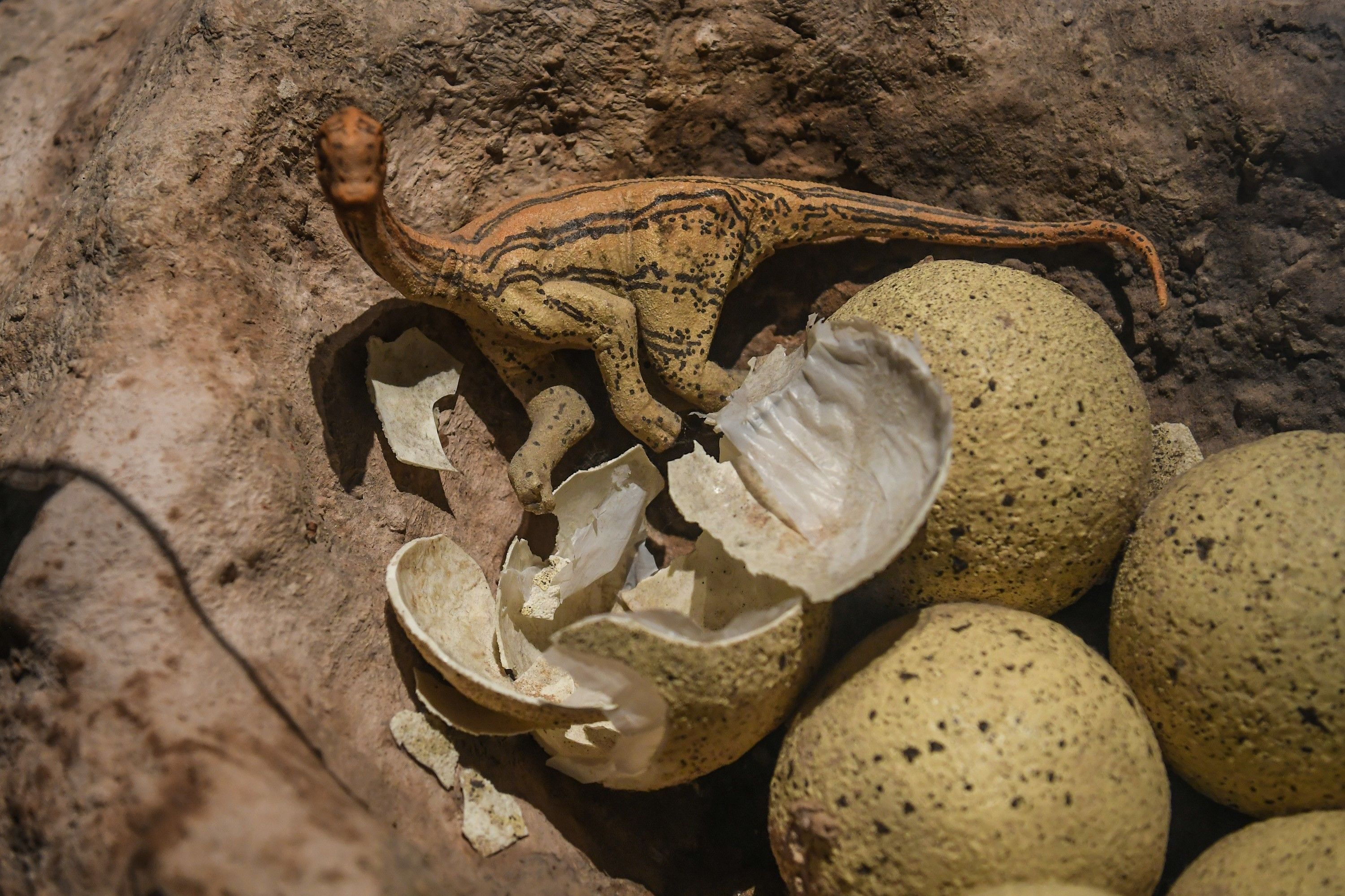Create a free profile to get unlimited access to exclusive videos, sweepstakes, and more!
This baby dinosaur walked on 4 legs, then 2... just like us

What is the only other creature, besides humans, that started life on all fours but finally transitioned to standing on two legs? It wasn’t some ancient mammal. Try a dinosaur.
Before you start thinking you might be part reptile, this has nothing to do with DNA. It’s just a bizarre coincidence that the only other creature ever to transition from being quadrupedal to bipedal was something cold-blooded that was walking around millions of years ago. No living animals (at least that we know of) make such a transition from birth to maturity.
Mussaurus patagonicus was a sauropodomorph — a type of long-necked, long-tailed plant-eater — that had all four legs on the ground when it first busted out of its egg. Researchers Andrew Cuff of Royal Veterinary College in the U.K., Alexandro Otero of Museo de la Plata in Argentina, and their team realized what M. patagonicus had in common with us when they studied six nearly complete skeletons that spanned from hatchling to juvenile to adult.
This striking and possibly unnerving similarity to human development has to do with the center of the balancing point of the body, otherwise known as the center of mass. You need to be able to get your feet under your center of mass to actually stand. M. patagonicus had a center of mass (CoM) toward the front of its body when it first hatched, so it needed support from its forelegs, but as Cuff and Otero’s team found out, that gradually changed as it plodded toward adulthood.
“Mussaurus’s CoM shifted [towards the tail] as the relative sizes of the head/neck and pectoral appendages were reduced whereas the hindlimbs were enlarged,” the researchers wrote in a study recently published in Scientific Reports.
Hatchlings of this species needed to support themselves on all fours until they developed strong enough hind legs and a heavy enough tail to stand on two feet. They actually walked on all fours, much like human babies. The team re-articulated all the skeletons on a computer and digitally converted them to 3D models to estimate total body mass and center of mass, proving the creature’s center of mass would reach its hips by the time it was a year old. That was probably the time it started to stand on its hind legs.
“The skeletons of adult sauropods and juvenile early sauropodomorphs are built in different ways and cannot be equated,” the team said. “In particular, our analysis of FMMs revealed major differences in how the relative dimensions of certain body segments of the body plan of Mussaurus developed … the enlarged tail had the dominant influence on [its transition].”
Tweet from John R. Hutchinson, also a member of the research team.
By adulthood, this dinosaur that started out small enough to fit in the palm of your hand would weigh over a ton. There just wasn’t enough mass toward the front of its body to keep it quadrupedal like the Brachiosaurus that you see roaming around in Jurassic Park. M. patagonicus kind of needed that huge tail so it wouldn’t crash on its face.
So we’re still not living dinosaurs, but when a developmental shift is so rare in nature that you’re the only extant creature that still undergoes it, you really start to wonder.
(via Scientific Reports)


























